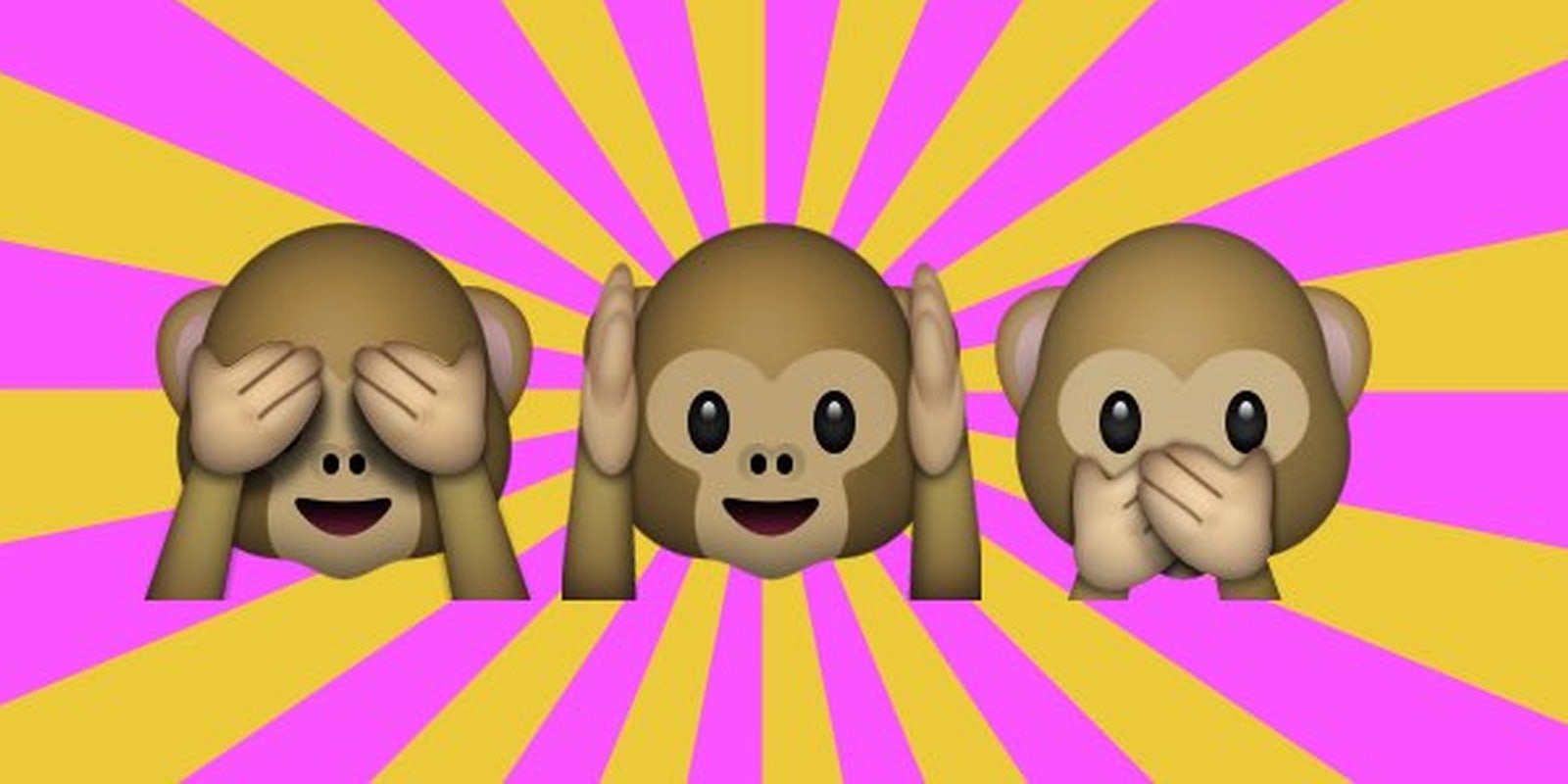Once in a lifetime—OK, like once in a year—a question comes along that seems to split the Internet commentariat in twain. Would a dog wear pants with two legs or four? Was “The Dress” black/blue or white/gold? It was black/blue, of course, but the point is that consensus was impossible.
The same seems to be true with this intractable question about the “see no evil, hear no evil, speak no evil” monkey emoji. Are those three separate monkeys, or the same monkey making different faces?
Comedian Jonny Sun asked the “seriouse question” on Twitter two days ago, and nearly 70,000 votes later, opinion is still split 50/50.
seriouse question!!!
— jonny sun (@jonnysun) May 9, 2016
🙈🙊🙉
People have extremely strong feelings about this and are attempting to make logical arguments to support their answers. But it may be an unanswerable question. After all, it’s not like the creator of the emoji had to consider whether they were the same monkey or not. The usage would be the same either way.
Still!
@jonnysun this is my literal mentions rn wat have i done pic.twitter.com/lzfAGAl5jF
— jonny sun (@jonnysun) May 10, 2016
.@jonnysun Wikipedia literally states there are THREE wise monkeys with THREE SEPARATE NAMES. check and mate. pic.twitter.com/2CtqbpSRjE
— Sam H. Escobar (@myhairisblue) May 10, 2016
@jonnysun Not even a debate. The “one monkey” people are explicitly wrong pic.twitter.com/nW5ePUZAeU
— Andrew is Online™ (@AndrewM138) May 10, 2016
@AndrewM138 @jonnysun each of these is merely a particular state of being
— cloudbod ☁️ (@cloudbod) May 10, 2016
attainable at different times by one monkey
The monkeys may have names, but are they just a metaphor, not three literal monkeys? Also, who cares? (Besides, apparently, everyone.)
We asked Jonny Sun what he was thinking when he unleashed this world-dividing menace on all of us, and his reasons were… well, they were pretty reasonable. He explained, via email:
I’m currently doing a PhD at MIT on social media and the city—specifically the linguistics of social media—and lately I’ve been fascinated by emoji as an emerging and shifting language form being shaped by online speech and being taken and appropriated for new purposes. I also have this ongoing conversation with @kaysarahsera about the constantly shifting meanings of emoji, and a few days ago we had talked about how we use the monkey emoji, and so that was in my head too.
Sun was surprised and fascinated by the deep and even split between the three-monkey and one-monkey camps, but he’s thoroughly thought this through and has come to his own conclusion: Despite the mythological origins of the three-monkey idea, it just doesn’t square with the way people use emoji in practice.
“The one-monkey team I think is more interesting because they speak on the side of how these emoji are interpreted and used in day-to-day life,” he wrote.
“Their arguments are in usage and interpretation. My favorite argument is that the cat emoji is the same cat going through different emotions—why would it be different for the monkey? It goes back to how people project themselves as that character when they use emoji.”
In other words, even if the emoji characters were intended to represent three discrete monkeys, we don’t mentally divide our egos into three parts when we type all three of them in a row. The monkey is us, and it’s one monkey.
A strong case, but now it’s been left to the masses to rule.
Now BuzzFeed, infamous inflicters of The Dress, have picked up the debate and piped it through their own ponderous Internet megaphone. Will the Monkey War ever end? Will any of us get out alive?
As Sun points out, the monkey debate is potentially even more fraught than that waged over The Dress.
“The Dress had one clear answer, and the other answer was completely wrong,” he wrote. “This is more divisive because both sides have really strong arguments to support their beliefs, and their beliefs are really a personality test as to what type of reasoning and what type of thought process they adhere to.”
.@twitter OMG WHAT. WHAT.
— jonny sun (@jonnysun) May 12, 2016
H/T Cosmopolitan


